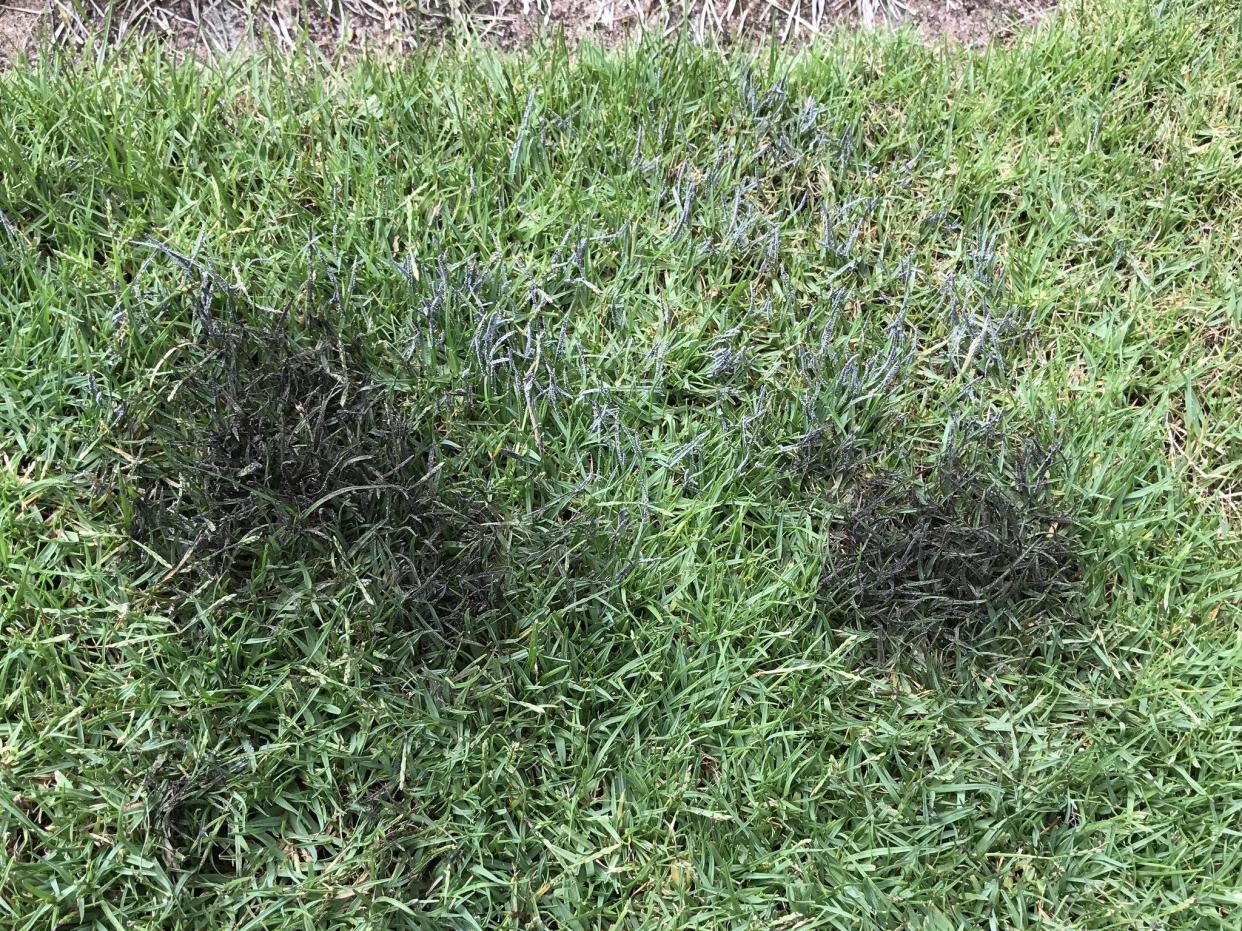Campbell Vaughn: Black, gooey substance in your lawn is nothing to worry about

On the lawn and garden radio show this past Saturday, a nice lady called in wondering about this black, gooey substance that was growing in her yard. It looks like if it were to move it would attack you like something from a 1950s horror film. And it has such a creepy name; slime mold.
Fear not my friends, there is good news to be had. The multi-colored stuff we are seeing is harmless and will be gone in a week or two.
Slim mold is kind of a cool name in itself. They are not a true fungus but more of a blob similar to an amoeba.

You will often see some black tints in your lawn and if you look closely, you can see a large number of pinhead-sized fruit on the blades of grass. They will appear suddenly in patches up to about 2.5 feet in diameter. This slime mold is not parasitic so it won’t do any actual harm except maybe shade the grass a little making photosynthesis less efficient. It is actually only using the grass for structural support.
Why is this slime mold here now? Like most creepy things in your landscape, this slime mold has just found an opportune time to thrive. Cooler than normal temperatures with high humidity are ideal conditions for this type of mold. And with the weather we are having I can see why it has sprung up all over. It is likely that it will show up again in the same spots next year, but you can do a couple of things to help minimize it.
A build up of thatch provides the organic matter that helps with feeding the mold. It can help if you rake or dethatch the lawn and send the remains elsewhere.
Campbell Vaughn: Tips to help keep the weeds at bay in your lawns
Campbell Vaughn: Know the signs of Asian Ambrosia beetles and chinch bugs
And the question I know all of you want to know is how do I get it to go away? Time will do the trick.
This type of slime mold only lasts about one or two weeks, so by the time you realize it is there it will likely be gone shortly. Mowing it can help, but if you want it gone yesterday, spray it with a high-powered nozzle from a hose and it will no longer be a bother.
A couple of other notes from the landscape world: Our cooler spring has some of our grasses slower to green up than normal. Be patient. The heat is on the way and the grass will be just fine. The cooler weather might add some yellowing to centipede so make sure you add a little iron. I fertilized my Bermuda lawn three weeks ago and now I am mowing about twice a week. Glad I have a riding lawn mower.
This article originally appeared on Augusta Chronicle: Slime mold causes no harm to lawns and goes away quickly

